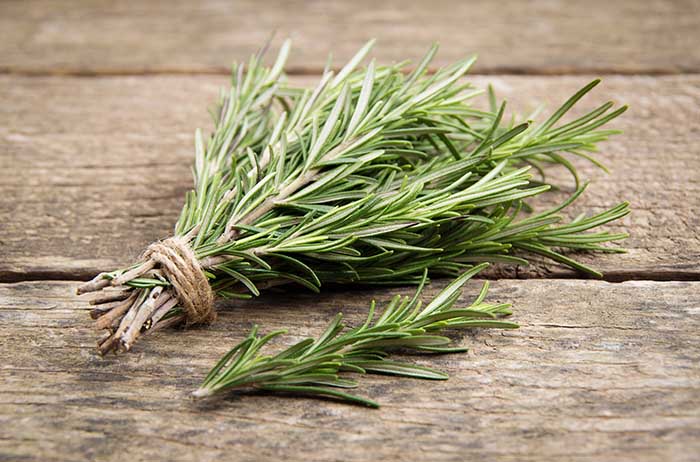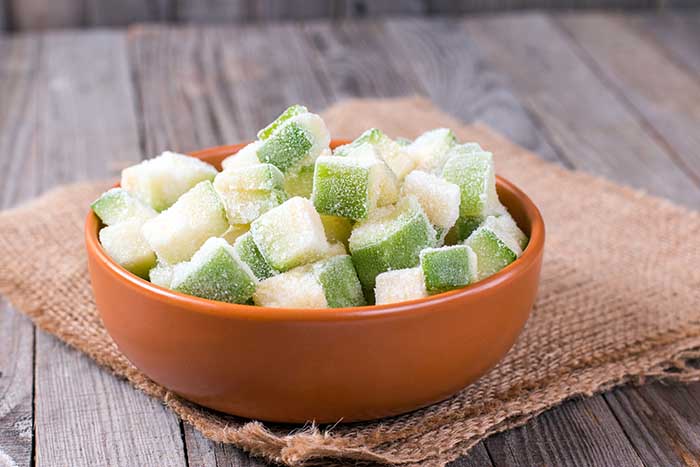The best Swiss cheese substitutes to use in sandwiches, homemade fondue, or pasta dishes. From Gruyère to Gouda cheese, these are the best alternatives to use today.
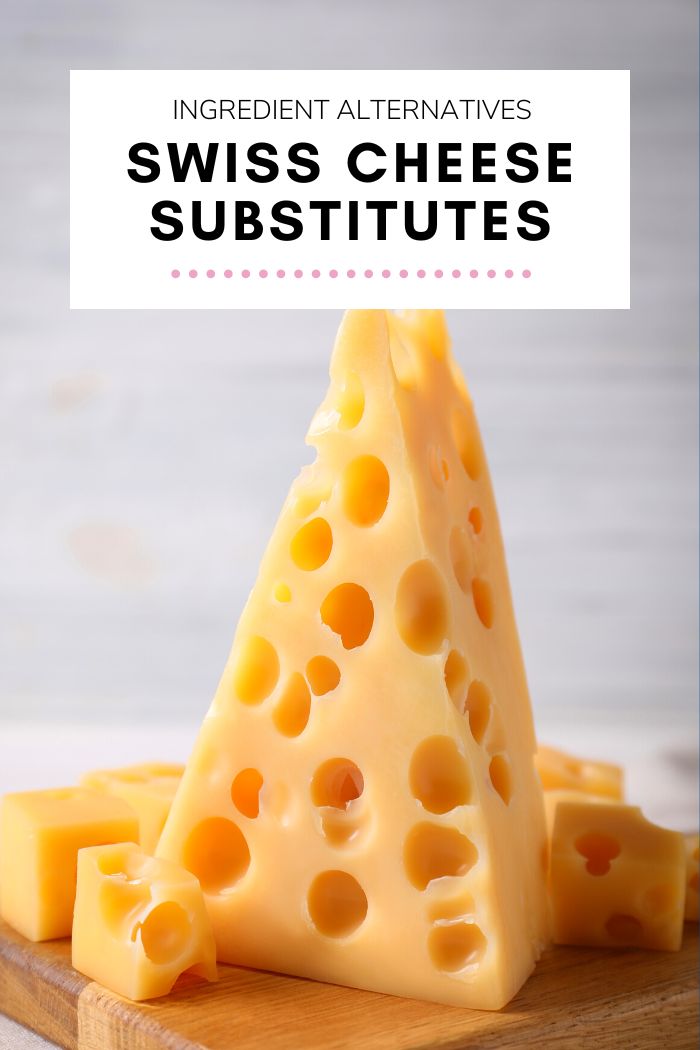
Swiss cheese has a mild, nutty flavor and is one of the most popular cheeses in America. Though this cheese is prevalent in America as Swiss, it’s part of a Swiss variety called Emmenthal.
Swiss cheese is diverse and gets used in many dishes. Because the cheese melts well, it’s often a primary ingredient in sauces. The cheese is also a popular option for topping sandwiches and makes an excellent addition to a cheese or dessert platter.
Without the characteristic hole-filled appearance and deliciously nutty taste, your food platters and cheese sauces will miss out. But luckily, there are plenty of Swiss cheese substitutes you can swap in as the perfect replacement in a pinch.
The best substitutes for Swiss cheese are sharp white cheddar, mozzarella, and provolone. These cheese have similar nutty flavors and all melt well. Additionally, fontina cheese becomes rich and creamy when melted and can serve as a delectable alternative for Swiss. You can try Gruyere on cheese boards with various meats and Edam for sweeter dishes.
Sharp White Cheddar
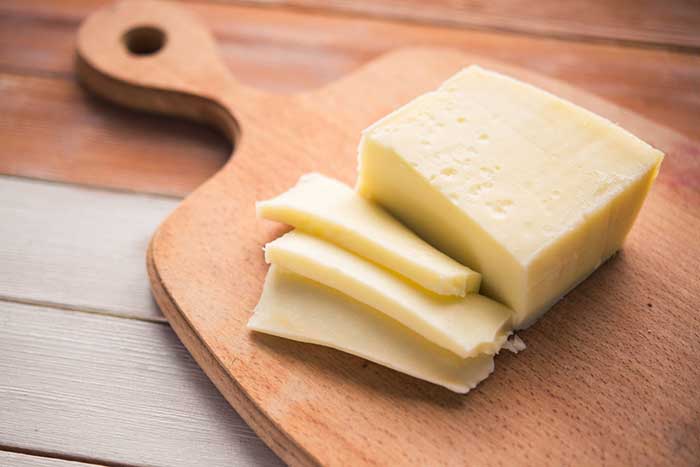
Sharp white cheddar delivers that full, nutty flavor you’re looking for when replacing Swiss. Not only is it an excellent alternative in terms of taste, but it’s as readily available as Swiss cheese.
This type of cheese melts well into a smooth, rich, and creamy texture, so it replaces the well-melting Swiss seamlessly. It’s ideal for sauces, pasta dishes, and baking. Although sharp white cheddar may be more crumbly than Swiss, it still works on a cheese board.
You might have trouble cutting this cheese into thin, delicate slices for sandwiches. And sharp white cheddar also lacks the iconic holes Swiss cheese is known for, although this doesn’t impact the taste.
Used in the same amount as Swiss cheese, sharp white cheddar will make a stronger-tasting cheese sauce.
Fontina
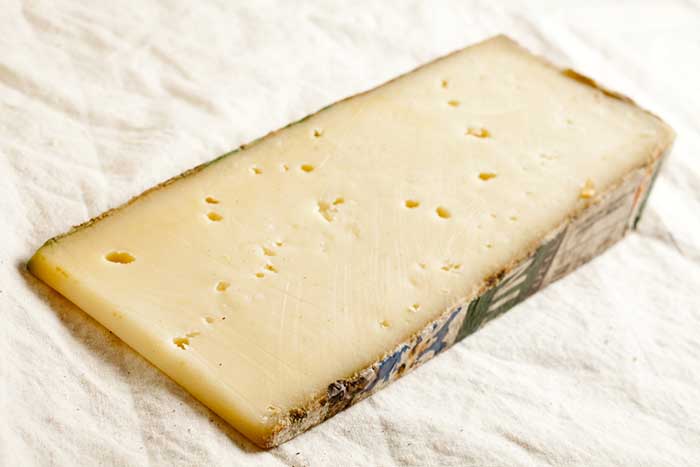
Fontina is an Italian cheese made from cow’s milk. The versatile cheese is popular in many countries, including:
- The United States
- Canada
- Denmark
It has a light yellow color and boasts small holes throughout, making it similar in appearance to Swiss cheese.
And like Swiss, this alternative cheese has a mild, nutty flavor.
The trick to using fontina cheese comes with knowing how cheese ages. Younger fontina is semi-soft. It melts well into creamy sauces and fondues, and it makes the perfect addition to a colorful charcuterie board.
The older fontina cheese gets, the harder it gets. This firm texture means that older fontina is ideal for grating.
When using fontina as a substitute for Swiss cheese, your best bet will be to use a younger, softer piece. That will be easiest to cut for a cheese board or melt into a sauce.
Mozzarella
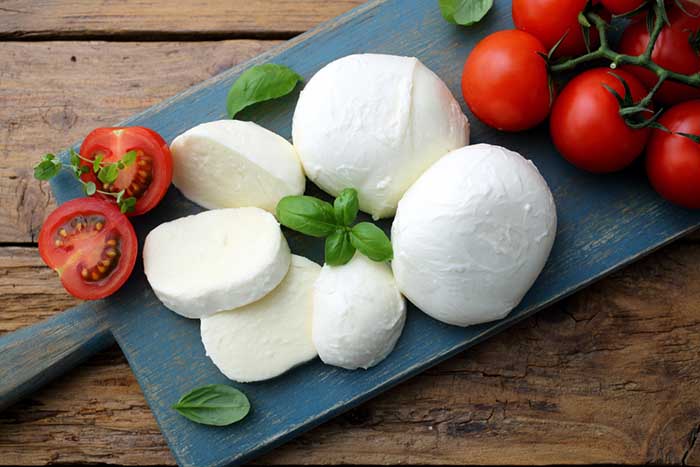
Mozzarella cheese is a beloved cheese known for its Italian heritage and high moisture contents. The cheese is famous for many dishes, from Caprese salad to mozzarella sticks and everything in between. It’s also the cheese of choice to top a pizza.
If you’ve had a dish with mozzarella in it, you know that it’s a creamy, milky cheese with a fresh, light taste. You also know that it melts, oozes, and stretches in the best way possible.
Mozzarella is one of the few kinds of cheese that gets eaten fresh. In fact, the fresher, the better. It isn’t aged like other cheeses, which is why it has a higher moisture content.
Other versions of mozzarella are processed to be firmer. These versions are often sold in blocks, slices, and shredded forms. These forms serve as a fantastic substitute for Swiss cheese because they melt nicely without becoming watery and add just the right amount of flavor.
The flavor of a mozzarella substitute for Swiss may be a bit milder and lighter, but it will get the job done for your favorite Swiss cheese recipe.
Provolone
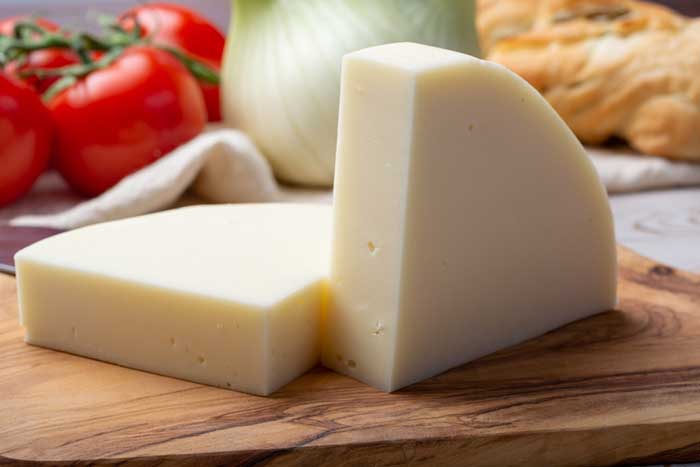
The next Swiss cheese alternative on the list is another cheese of Italian descent. Provolone cheese is very popular in the United States. It’s often used as a topping for sandwiches, as it goes with all kinds of deli meats, tuna, cheese steaks, and more.
This semi-hard cheese makes a great substitute for Swiss, due to its milky taste and yellow-white color. It may lack the famous holes Swiss cheese has, but it melts just as well. It’s a great option for topping baked dishes, adding to creamy sauces, or melting down for fondue.
We love provolone as a Swiss cheese alternative because of how common it is. Because of its popularity, you can find it in any grocery store. There’s a good chance you even have it in your refrigerator right now.
Gruyere
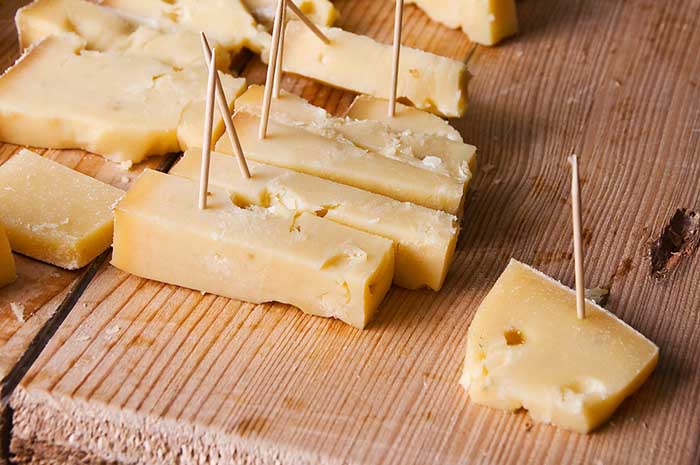
In many ways, Gruyere cheese is the perfect substitute for Swiss cheese, as it is a type of Swiss cheese itself. This firm, yellow cheese is known as an excellent table cheese. It slices well for cheese boards, dessert pairings, and sandwiches. It has a layered flavor profile, with elements of:
- Nuttiness
- Creaminess
- Saltiness
The taste of Gruyere is similar to Swiss, but it may give you a slightly bolder flavor that can liven up your dishes. Although the flavor is complex, it won’t overwhelm your dish or platter.
This type of cheese has the perfect balance of water and oil, which means it melts well and adds a deep creaminess to dishes. It’s versatile, and you can use it on top of baked dishes, in cheese dips, for fondue, on French onion soup, and much more.
Edam
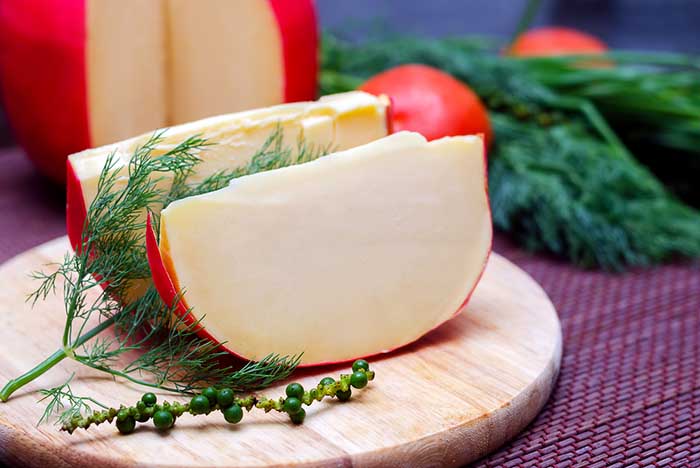
For a taste of the Netherlands, you can’t go wrong with Edam cheese. This semi-hard cheese closely resembles Swiss cheese in many ways, though it can come from cow and goat milk.
Edam has the same mild, nutty flavor as Swiss cheese. It also has a salty taste, due in part to its production and packing processes.
Like fontina cheese, Edam’s taste can change with aging. For the best one-to-one match with Swiss cheese, it’s best to use a fresh Edam. The fresher version is much milder and more versatile. It slices well and pairs with fruits, crackers, and wine.
Edam also melts well. While it’s best in a solid form on a plate or platter, it will mix nicely into a sauce, dip, or soup. You can find it at the grocery store wrapped in red or black wax.
Manchego
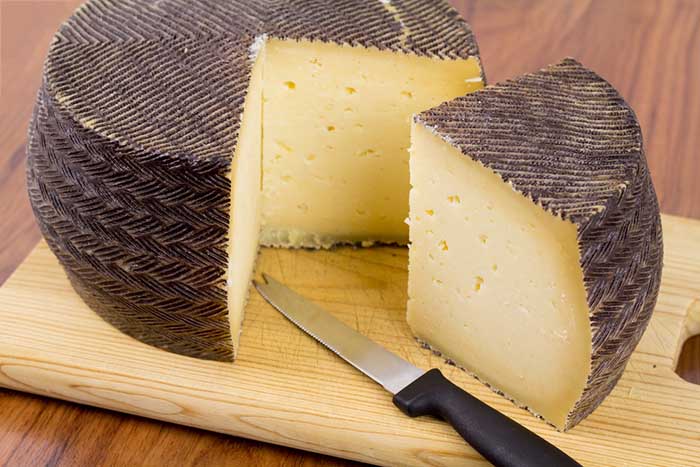
Italy has been the ruling country in our selection thus far, but let’s hop over to Spain for another top-notch Swiss cheese alternative.
Manchego cheese is a semi-hard cheese produced in Spain. Its nutty, mild flavor is similar to that of Swiss cheese, but it adds some fun notes of fruity sweetness for a pleasant overall taste.
Manchego is commonly prepared battered and deep-fried, making it the ideal Swiss substitute in any frying recipe. It also pairs nicely with honey and jams and works well on a charcuterie board.
One of the bonuses to manchego cheese is that it’s gluten-free. It makes the perfect Swiss cheese alternative if you need to create a gluten-free recipe to avoid allergies. But be careful if you’re vegetarian or vegan, as this cheese is often made with animal-derived rennet.
Gouda
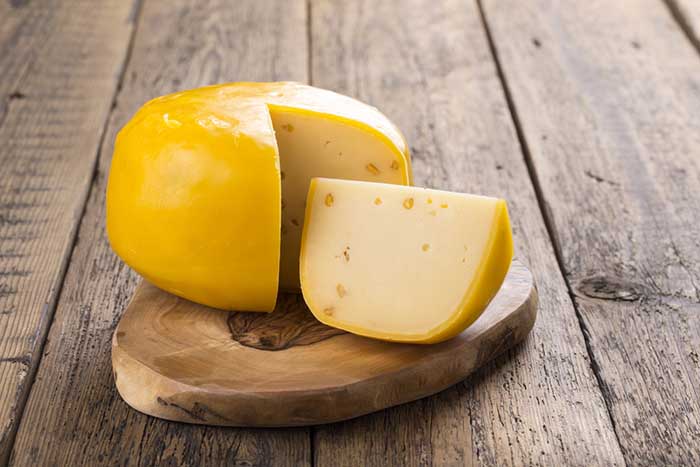
Gouda is another cheese that changes features as it ages. Young gouda has a smooth flavor, while older gouda is sharper. You can find a wide range of flavors due to the aging process.
But like Swiss cheese, gouda is semi-hard and offers a nutty flavor. When used the same in Swiss cheese recipes, gouda looks and tastes similar. It’s best to go for a mid-aged gouda to achieve a medium flavor closest to Swiss.
The great thing about gouda is that you can toy with different ages to create different flavors in your recipe. You can opt for an older cheese for a bolder taste or reel it in with a fresh block. The choice is yours, and it will be a fabulous replacement for Swiss.
Pecorino Romano
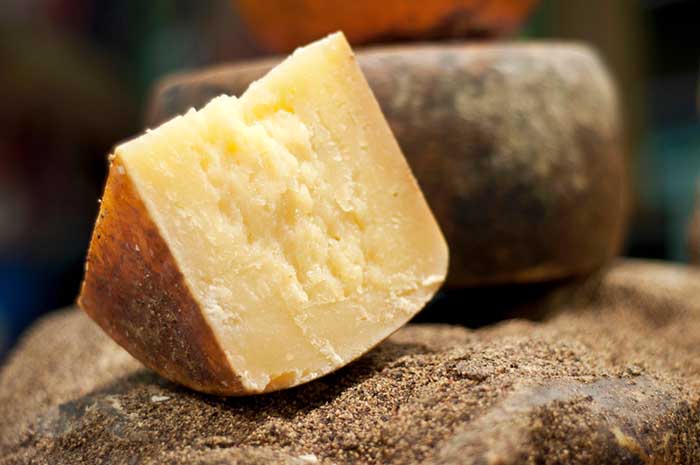
Pecorino Romano is yet another Italian cheese alternative to Swiss cheese. This cheese is made from sheep’s milk, which means it may have a slightly different flavor than what you’re used to with common cow’s milk cheese.
However, it does come with a similar nutty, milk flavor – plus it adds a buttery taste.
Pecorino Romano is a hard cheese with a creamy yet crumbly texture. The aging process can drastically change the flavor and texture of this cheese. Aged versions deliver that buttery flavor, but a younger pecorino romano will be:
- Softer
- Creamier
- Milder
The soft texture is excellent for cheese boards and desserts, while the mild flavor is a great choice for baking and melting.
Burrata
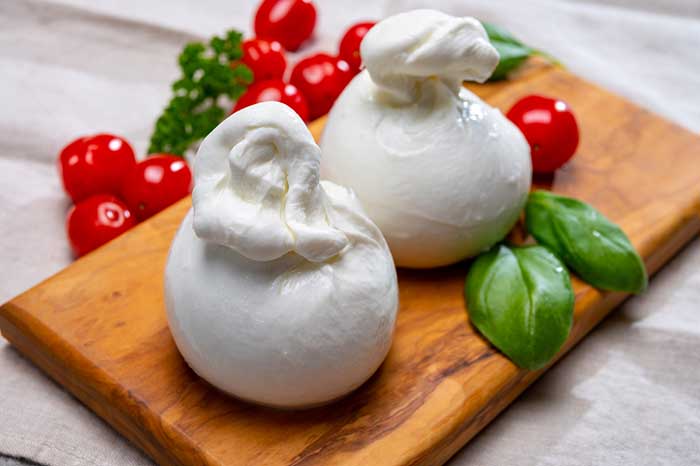
Burrata cheese is a fascinating dairy product that has quickly overtaken traditional mozzarella’s popularity. This specific Italian cheese uses mozzarella to its advantage.
Burrata cheese has a mozzarella outer shell and is filled with cream and stracciatella.
Stracciatella is a form of fresh mozzarella that has been shredded and soaked in sweet cream. So, one could say that Burrata is a kind of super mozzarella that delivers a creamy texture and a mild savory flavor profile.
And as far as flavor goes, Burrata is the perfect substitute for a mild cheese like Swiss. Burrata also has a similar texture and can be served as it or melted into sauces, dips, and toppings.
The downside is that Burrata is more expensive than some of the more common cheeses on this list.

